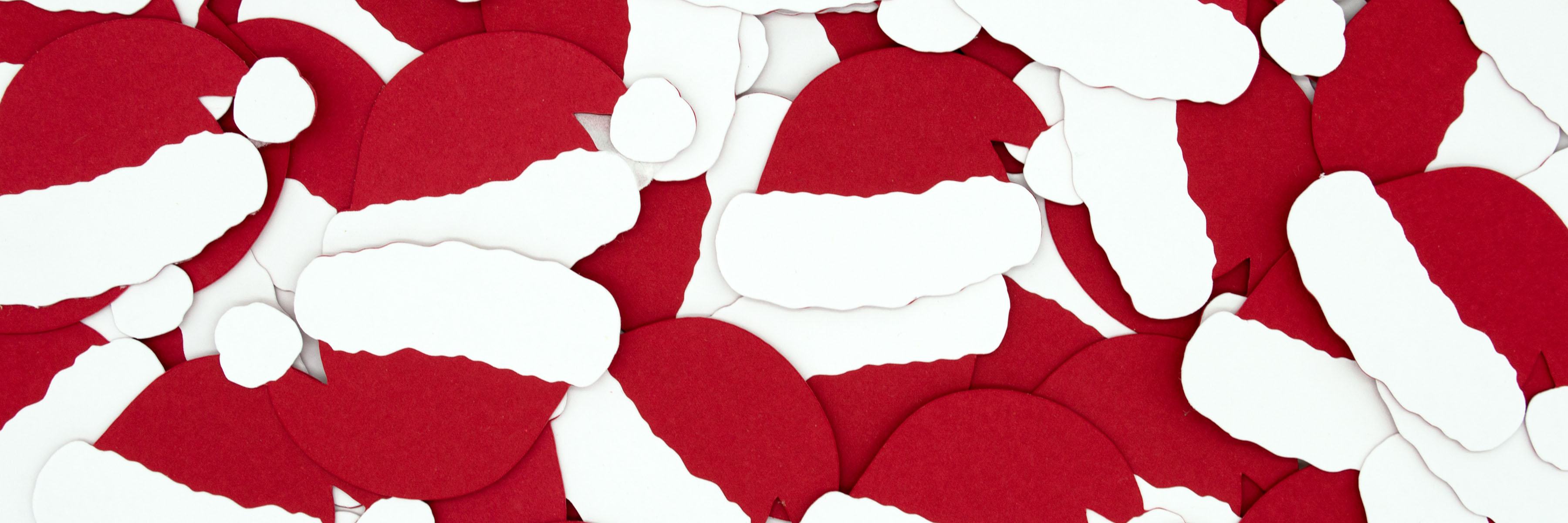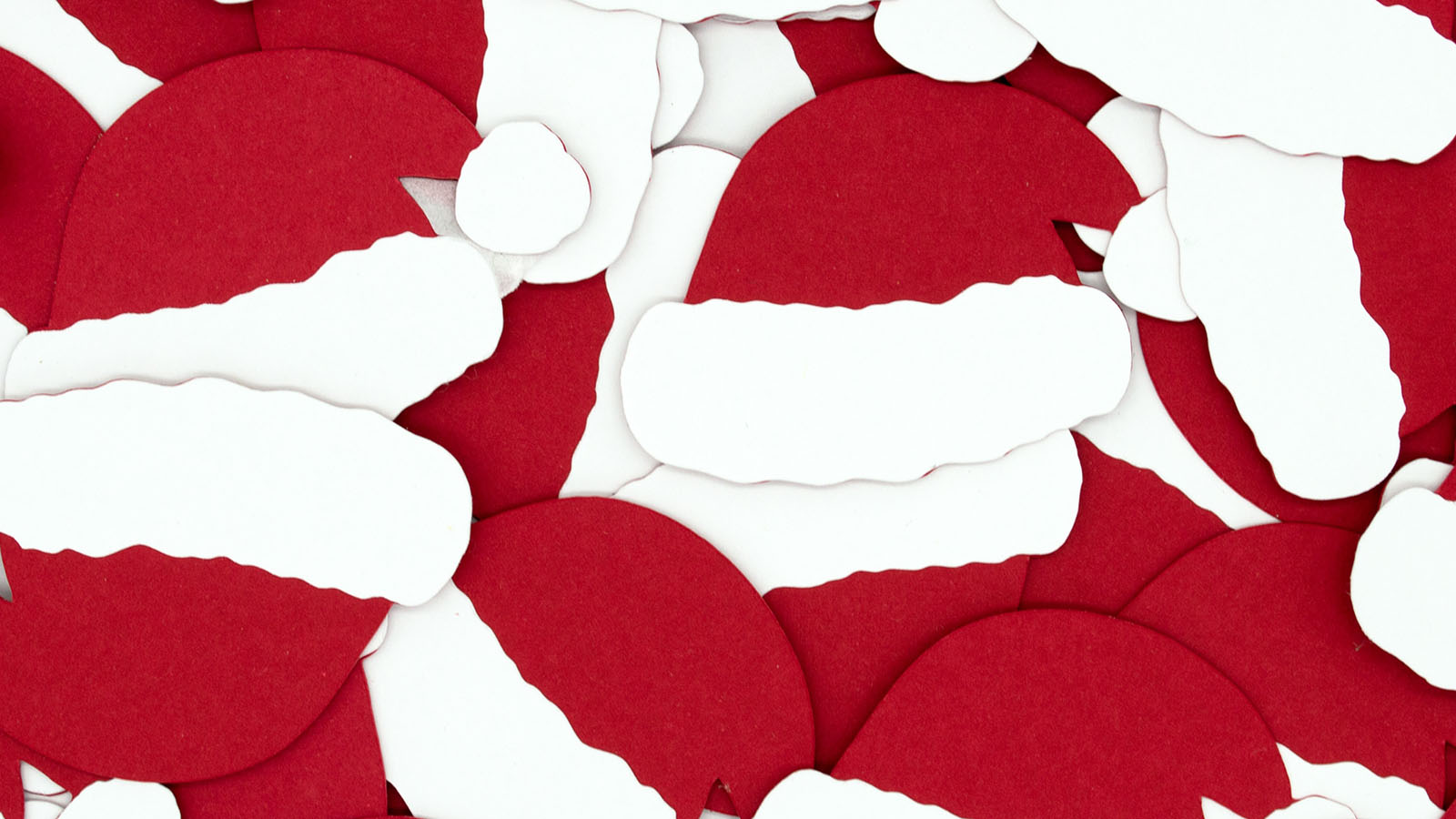What’s the science behind Santa’s Christmas Eve journey?
From Einstein’s theory of relativity to quantum teleporting, Queen’s Maths and Physics lecturer and researcher, Dr Andrew Brown examines how Santa manages to deliver so many presents in one night.
Theory #1: The present cannon
In a nutshell: If all the 1.2billion children in the world were to line up, the line would be 600,000 kilometres long, which would wrap around the equator about 15 times.
If it’s a long straight line, Santa would have to be doing 20,000 kilometres per hour to get from one side of the line to the other, throwing presents out the side of the sleigh as he goes.
Now, a reasonable sports person could catch something that is going at 60 miles per hour, but if you try and catch something that is going at 20,000 km per hour, you are in difficulties. Santa would need a technological approach – he might have some kind of present cannon on side of the sleigh.
However, 20,000 km per hour is about half the speed you need to send a rocket into orbit, and problems would arise if Santa started going faster for any reason. He might go into orbit.
Potential pitfalls: Santa and/or children skyrocketing into outer space.
Theory validity: 5/10

Theory #2: The Einstein theory
In a nutshell: If Santa was traveling at the speed of light, space would actually contract – known as Lorentz contraction - so very large distances would become very small distances.
If Santa was travelling very fast, in theory, he could shrink that line of children down to a more manageable distance.
Some people have suggested that the reason that Rudolph has a red nose is because he is travelling so fast that the force of friction on it is a little bit like a spacecraft coming back to earth’s atmosphere. The frictional force of the atmosphere causes a lot of heat to dissipate on the nose of the spacecraft, perhaps that’s why Rudolph has a red nose.
However, as you travel close to the speed of light, your mass increases as well. Your body becomes heavier. If Santa is going round the planet at 20,000 km a hour, he is experiencing 500 G-forces, which is way more than the human body can cope with.
Potential pitfalls: Santa’s belly implodes like a bowl full of jelly.
Theory validity: 6/10

Theory #3: Teleportation
In a nutshell: A few years ago, a physicist in England calculated that it would be theoretically possible to construct something like a warp drive that they have in Star Trek. You would have some sort of engine which slows time down behind the sleigh and speeds time up front of the sleigh.
This would effectively allow you to move at an arbitrarily high-speed relative to the earth within your little bubble without experiencing these problems of your mass increase.
The problem is that would use more energy than there is in the entire universe, unless Santa has some other universe that he is drawing his energy from, this might not be a feasible option.
Potential pitfalls: The universe runs out of energy.
Theory validity: 7/10

Theory #4: Quantum time travel
In a nutshell: In principle, there is no reason you can’t stop or reverse the arrow of time. When you look at small systems, atomic systems, you can reverse the clock; you can make them move backwards. Time travel, on a very small scale. But once the laws of thermo dynamics kick in, the whole thing breaks down. Thermo dynamics say, for example, if you have a hot cup of coffee that goes cold, there is no way you can heat it back up again.
If you make a quantum espresso, it can somehow reverse time and heat up again. The problem lies in making those espressos something you might be able to drink, that breaks down.
At the quantum level, however, it seems like time travel is possible.
There might be a way of harnessing this effect and being able to control it in some way to make time travel possible.
Maybe Santa knows a lot more about quantum mechanics than we do.
Potential pitfalls: Flouting the laws of thermo dynamics
Theory validity: 8/10

Theory #5: The Von Neumann Theory
In a nutshell: There is an experiment called the Von Neumann probe. Basically, the idea is you would send out one spacecraft and once it finds a distant galaxy or lands on a planet, it then uses the raw materials it finds there to construct another space probe. Now there is two and they go out and construct more, so you are exponentially increasing the amount of space you can cover.
Maybe Santa has created a Von Neumann sleigh. Say on Christmas Eve, he sends out seven sleighs, one for each continent, and when they are there, they use materials to construct another one. You might start out with creating one for each country, and then one for each city and so on. Doubling up as you go.
Feasibly, you could do this with nano technology; you could have a self-replicating sleigh.
Divide and conquer, as they say. Perhaps Santa has harnessed the power of this quantum reality. He can be in more than one place at one time.
Either, he has self-replicating system, or he has done this quantum mechanics thing, where he is able to be omni present. That would make it a doddle because he only has to rock up at one house, but he can be at all of the houses
Those are the only two options. I would say that is definitely how it works.
Potential pitfalls: Santas, Santas everywhere...
Theory validity: 9/10
Addressing Global Challenges
Excellence in research and innovation, and making a positive global impact, are central to what we do at Queen’s University Belfast. Find out more.


